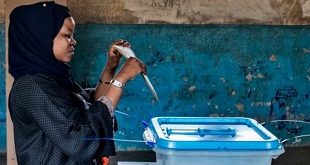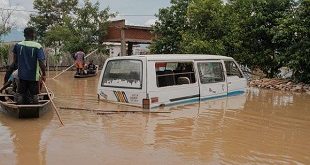
Washington, United States | AFP | A comprehensive probe into last year’s deadly attack on US and local forces in Niger uncovered a series of avoidable blunders leading up to the assault, the Pentagon said Thursday.
Four American soldiers and four members of Nigerien partner forces were killed in the October 4 ambush, when scores of jihadists overran their convoy in southwestern Niger, near the Mali border.
While the Pentagon said all four US soldiers fought bravely and “died with honor,” investigators found they had not been properly trained ahead of the mission and pointed to problems with how it was approved in the first place.
The US soldiers, who belonged to a special operations team, had deployed to the western African nation in the autumn to conduct counter-terrorism assistance and training with the Nigerien military. Currently about 800 US troops are in Niger.
But at the time of their deployment, only half of the US team had conducted any collective training together, according to an eight-page summary of findings of the investigation, which itself remains classified.
Their mission on October 3 was to “find/fix and, if possible, capture” a key member of a group calling itself the Islamic State in the Greater Sahara, the summary states.
Though the summary did not name the target, officials later said it was Doundoun Cheffou, suspected of involvement in the kidnapping of US aid worker Jeffery Woodke, who was seized at gunpoint from his home in October 2016 in the Tahoua region.
However, the US team commander had “inaccurately characterized” the nature of the mission in order to get it approved at a low level instead of requesting permission from battalion-level commanders based in Chad.
The language used for the initial mission had been cut and pasted from previous operations and “a lack of attention to detail in quality control and quality assurance,” together with inadequate approvals, “all contributed to a general lack of situational awareness and command oversight at every echelon,” the report summary states.
And prior to setting out on the operation, the US team failed to conduct pre-mission rehearsals or battle drills with their Nigerien counterparts, the report found.
Eleven US personnel and more than 30 Nigeriens went out on the mission.
Investigators found “individual, organizational and institutional failures and deficiencies that contributed to the tragic events,” but did not identify one single failure or deficiency as the sole reason.
General Thomas Waldhauser, head of Africa Command, told Pentagon reporters that US forces are now “far more prudent” in their missions and have beefed up firepower and drone support.
“It provides adequate and more resourceful force protection measures in order to still keep up with the enemy forces on the ground,” he said.
– French ‘show of force’ –
Pentagon officials also published a detailed, 10-minute reconstruction of the ambush itself, which started as the US-Nigerien eight-vehicle convoy headed out of the remote village of Tongo Tongo, having stopped there for water.
The troops were not even wearing body armor when the assault first began, and had to stop their convoy to don it.
Enemy fire was initially light, but quickly intensified as jihadists surged through a wooded area alongside the convoy.
The video describes how the convoy was forced to split up and how it was outflanked by over 100 enemy fighters.
Officials praised the actions of the French air force, which flew Mirage jets in a low-altitude “show of force” over the jihadists, screaming overhead at the same level as treetops.
Because the French could not tell where the US troops were on the ground, they did not engage the enemy, but the overflights caused them to retreat for cover, “likely saving the lives of the surviving members of the” US team, the summary states.
Major General Roger Cloutier, who led the probe, said three of the US soldiers’ bodies had been placed in or by a jihadist vehicle, and had been stripped of all their gear.
The jihadists “were driven off by French aircraft,” he said.
The fourth American to die was Sergeant La David Johnson, and the video shows he became separated from his comrades. His body was not found until 48 hours after the attack — he had taken cover under a the branches of a large thorny tree.
Defense Secretary Jim Mattis has issued a series of recommendations in light of the report, including better pre-deployment training.
Waldhauser said Special Operations Command will eventually award medals for valor to the troops on the mission.
 The Independent Uganda: You get the Truth we Pay the Price
The Independent Uganda: You get the Truth we Pay the Price


